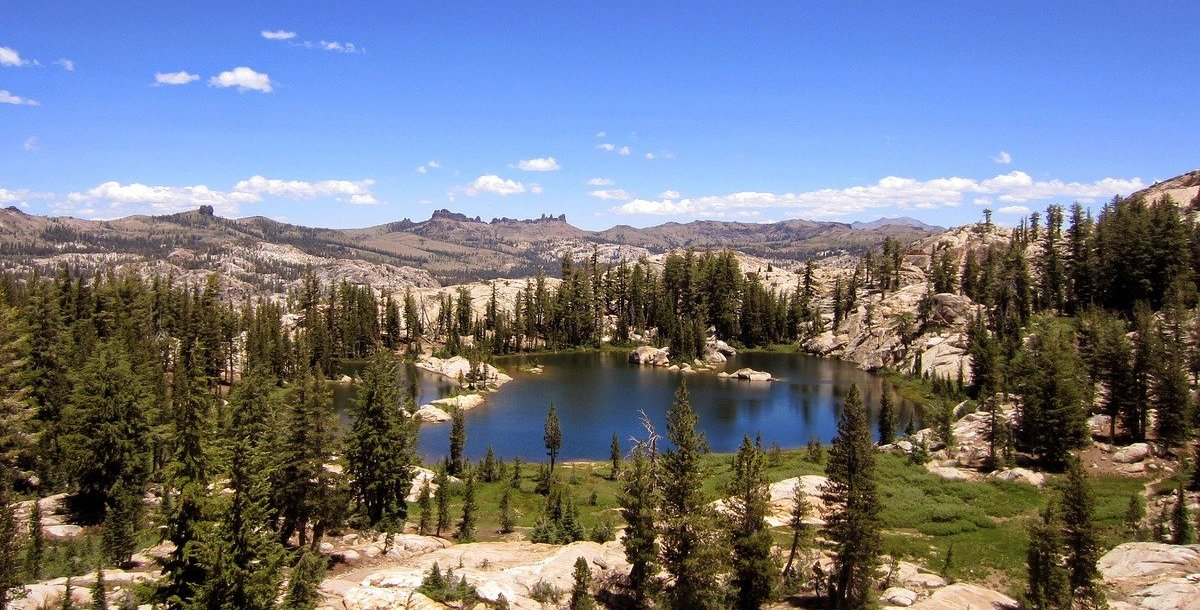In California water news this weekend …
New technology saving water and environment could make difference in farm profitability
“The amount of water you can save at home is a drop in the bucket in the grand scheme of things, but agricultural users are responsible for an estimated 50% of total water used in California. So if they can reduce use, it would be noticeable.”Water is our most expensive input, it’s our most precious input, and we’re just trying to do everything we can to be as sustainable and successful as possible,” said Jason Cole, a ranch manager with Cole Limited in Santa Paula. Cole’s family has grown avocados and lemons across 4,000 acres in Santa Paula for three generations, but over the last decade, he has turned to Acuity Agriculture and Benchmark Labs to get farm specific climate data that can save up to 10% of his water usage. … ” Read more from ABC 7 here: New technology saving water and environment could make difference in farm profitability
Sacramento County wants to float money into new bill to remove over 30 abandoned vessels
“A privately-owned and abandoned former military boat recently burned by a fire will remain in one of Sacramento County’s waterways along with more than 30 other discarded watercraft, creating health and safety hazards. It would cost the county an estimated $6 to $9 million to safely remove and dispose of these “abandoned and derelict commercial vessels,” and there currently is no California program with the funding, authority or expertise to do the job. So, the abandoned vessels will continue to sit there in the water. “We don’t know how long they will remain there,” said Natasha Drane, Sacramento County’s governmental relations and legislative officer. … ” Read more from the Sacramento Bee here: Sacramento County wants to float money into new bill to remove over 30 abandoned vessels
‘Save our water’: Signs urge Californians to limit outdoor watering amid drought
“Beginning Friday, June 24, and running through Monday, June 27, Caltrans electronic signs across the state will display the message “Severe Drought. Limit Outdoor Watering.” The messaging raises awareness of the urgent need for Californians to save water as the state faces severe drought. Limiting outdoor watering is one of the best ways Californians can cut back on water use – outdoor watering accounts for up to 60% of the average Californians’ water use, according to the California Department of Water Resources. … ” Read more from KRCR here: ‘SAVE OUR WATER’: Signs urge Californians to limit outdoor watering amid drought
The grande dames of the Delta
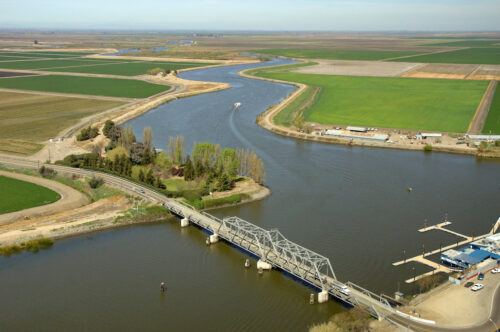 “The moveable bridges that cross the rivers and sloughs in the Sacramento-San Joaquin Delta were built in the first half of the 20th century, and most are operated by control panels as old as the bridges themselves. A day spent touring these strong-boned grande dames on backwater levee roads or zigzagging across the Sacramento River on scenic State Route 160 is time well spent. But that’s leisure time, and for the tens of thousands of commuters who use the heavily trafficked corridors of the Delta, the four-to-twenty-minute wait for a bridge to open for marine vessels can be frustrating. Although vehicles far outnumber vessels these days, watercraft has the right of way. “When we open the bridge, we follow United States Coast Guard rules and regulations,” says Rio Vista Bridge operator Phil Pezzaglia, citing federal regulations for navigation and navigable waters that a drawbridge must open “promptly and fully” upon request from a vessel. … ” Read more from Estuary News here: The grande dames of the Delta
“The moveable bridges that cross the rivers and sloughs in the Sacramento-San Joaquin Delta were built in the first half of the 20th century, and most are operated by control panels as old as the bridges themselves. A day spent touring these strong-boned grande dames on backwater levee roads or zigzagging across the Sacramento River on scenic State Route 160 is time well spent. But that’s leisure time, and for the tens of thousands of commuters who use the heavily trafficked corridors of the Delta, the four-to-twenty-minute wait for a bridge to open for marine vessels can be frustrating. Although vehicles far outnumber vessels these days, watercraft has the right of way. “When we open the bridge, we follow United States Coast Guard rules and regulations,” says Rio Vista Bridge operator Phil Pezzaglia, citing federal regulations for navigation and navigable waters that a drawbridge must open “promptly and fully” upon request from a vessel. … ” Read more from Estuary News here: The grande dames of the Delta
High levels of PFAS ‘forever chemicals’ found in fish
“PFAS are infamous for contaminating drinking water. But a growing number of studies suggest that we may also consume concerning quantities of these chemicals through food—especially fish. Earlier this year, New York State Department of Health (NYSDOH) scientists published a study finding that refugees from Burma living in the Syracuse area had elevated PFAS concentrations in their blood. Locally caught fish may be the source. But the full extent of PFAS contamination in fish—whether from a fishing hole or supermarket counter—is not yet known. U.S. Food and Drug Administration (FDA) and Environmental Protection Agency (EPA) studies are ongoing, and researchers are still working out how best to quantify PFAS in fish, as even exceedingly low levels are now believed to threaten human health. One concern is clear: Communities that rely on locally caught fish as a key component of their diet and culture may face the greatest risk. … ” Read more from Civil Eats here: High levels of PFAS ‘forever chemicals’ found in fish
Robot fish cleans microplastics from water
“Scientists have engineered a light-activated robotic fish that can clear microplastics, or tiny plastic particles, from water. The small tool could help rid the nation’s creeks and rivers of the particularly elusive pollution source. The fish, whose tail is powered by a rapidly cycling laser, was able to pick up plastic particles and transport them elsewhere, according to the study in Nano Letters. … ” Read more from The Hill here: Robot fish cleans microplastics from water
Ninth Circuit holds terms of management agency agreement governing non-point source pollution on federal lands supersedes other state law requirements
“Forest Service livestock grazing permits do not run afoul of state water quality permitting requirements because the Management Agency Agreement (MAA) between the agency and the State Water Resources Control Board, which governs non-point source pollution control measures for the area, controls and expressly waives such requirements. Central Sierra Environmental Resource Center v. Stanislaus National Forest, 30 F.4th 929 (9th Cir. 2022). As part of its authority to manage federal lands, the U.S. Forest Service may issue permits for livestock grazing.The Forest Service issued three such permits in Stanislaus National Forest subject to an MAA with the State Board to limit pollution from livestock grazing activities. In 2017, after years of water quality testing, plaintiffs filed suit alleging fecal matter runoff from the three grazing allotments polluted local streams in excess of allowable thresholds. ... ” Read more from Perkins Cole here: Ninth Circuit holds terms of management agency agreement governing non-point source pollution on federal lands supersedes other state law requirements
The Pacific Ocean near San Francisco has been the coldest it’s been in more than a decade. Here’s what that means
“The water along the Bay Area coast has been so cold lately that surfers have wished they had thicker wetsuits. Farther offshore, it’s been even colder. For example, a weather buoy at Bodega Bay recorded water temperatures as low as 47.8 degrees on June 21, the coldest it’s been that day for over a decade. That compares to a mean over the decade of around 51 degrees for June, typically the coolest month for that buoy, and other buoys in the area have shown similar trends. It’s been so cold that some fish appear to have been staying in the warmer waters of the bay. ... ” Read more from the San Francisco Chronicle here: The Pacific Ocean near San Francisco has been the coldest it’s been in more than a decade. Here’s what that means
DWR Apprentice Program exams available
“DWR’s Operations and Maintenance Apprentice Program has released four exams in 2022 for the paid apprenticeship program as an electrician, operator, mechanic, or utility craftsworker. The exams, available from June 24 to 30th, are the first step to applying for a career in the hydroelectric industry. Upon passing the written exam with a final score of 70 percent or better, applicants are placed on the eligible list and can apply for the apprenticeship program’s position openings. Vacancies are posted on CalHR’s website, usually in July. Apprentice classes are hired together, one time per year, in January. … ” Read more from DWR News here: DWR Apprentice Program exams available
California’s largest private landowner closes all forestlands to public indefinitely
“The largest private landowner in California is closing its forests to the public indefinitely beginning on July 1. Lumber giant Sierra Pacific Industries owns over 2 million acres of forestland across California, Washington and Oregon. The company, which is headquartered in Anderson, Calif., is one of America’s biggest private landowners. In areas where SPI is not actively logging, the public can usually access the land for hiking, permitted fishing and hunting and cross-country skiing. But starting Friday, SPI’s extensive holdings will be off-limits due to “extreme drought and wildfire conditions.” … ” Read more from SF Gate here: California’s largest private landowner closes all forestlands to public indefinitely
In commentary this weekend …
Comfortable cities ignore state water regs during drought
Ed Osann, Director of National Water Use Efficiency/Water Initiatives for the NRDC, writes, “This is a story within a story. The big picture is that California and much of the West is once again in extreme drought. From 2014 to 2017, California experienced its worst drought since statehood. Yet now, barely five years later, 97 percent of the state is experiencing severe drought again, and portions of Southern California that depend on the shriveled supplies of the State Water Project are under major curtailment orders. … The climate of the future has arrived. In the face of worsening drought, we’ve pointed out a wide set of measures that State and local governments, water utilities, and water customers can take to use drinking water more efficiently and better prepare for a warmer and drier future. See nine recommendations we made here last August. Yet in many of Southern California’s affluent, hip, and otherwise comfortable communities that depend on water from far-away sources, City Hall leaders continue to shrug off their responsibility to implement one of the state’s oldest water-saving statutes, the Water Conservation in Landscaping Act of 1992. … ” Read more from the NRDC here: Comfortable cities ignore state water regs during drought
In people news this weekend …
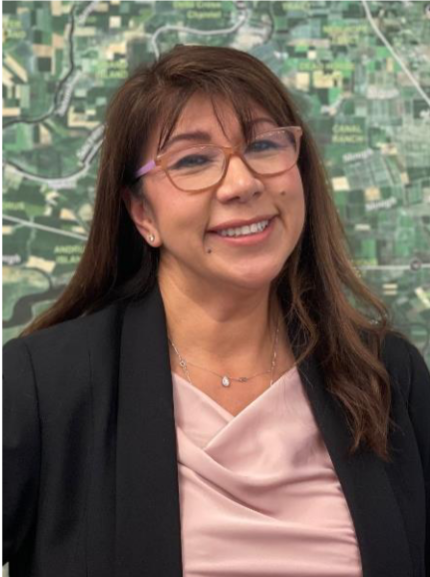 Vice-Chair Virigina Madueño voted Chair of the Delta Stewardship Council
Vice-Chair Virigina Madueño voted Chair of the Delta Stewardship Council
“At its June 23, 2022 meeting, the Delta Stewardship Council voted Vice–Chair Virginia Madueño to the post of chair. “It’s been a pleasure and a privilege acting in the absence of a full–time chair,” said Chair Madueño. “I see this as a huge responsibility and will rise to the occasion with all of you. Together, we can work creatively as a unified body to meet the needs and challenges we will face in the Sacramento–San Joaquin Delta.” Chair Madueño’s duties will take effect after she takes an oath to the position, which has been vacant since former Chair Susan Tatayon’s term ended in February 2022. Chair duties may be carried out for no more than four years. … ” Read more from the Delta Stewardship Council here: Vice-Chair Virigina Madueño voted Chair of the Delta Stewardship Council
Col. Chad Caldwell assumes command of Sacramento District
“Col. Chad W. Caldwell assumed command of the U.S. Army Corps of Engineers Sacramento District today during a Change of Command ceremony at Capitol Park in downtown Sacramento. Col. (P) Antoinette R. Gant, commander of the Corps’ South Pacific Division, presided over the ceremony to introduce the district’s 34th commander and bid farewell to Col. James J. Handura, who will now transition to his new assignment as Chief of Staff at USACE headquarters in Washington, D.C. “Command is a job of unrelenting pressure. Our Army’s successes and failures ultimately rest upon the decisions and actions, or inactions, of our commanders,” Gant said. “[Col. Handura] has been the right leader during some very challenging times.” … ” Continue reading at the Army Corps website here: Col. Chad Caldwell assumes command of Sacramento District
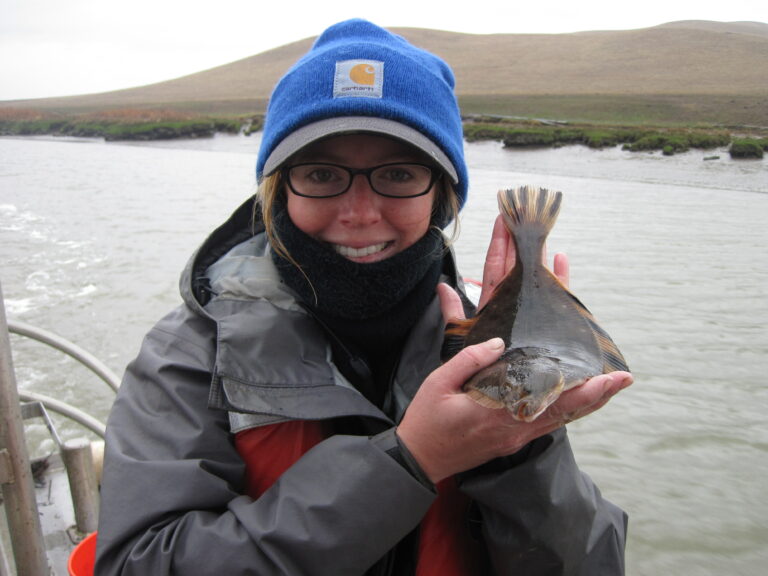 Finding her way to fish: Denise Colombano
Finding her way to fish: Denise Colombano
“The path into a career is not always a straightforward one. “I hated school. I mean, hated school,” says Denise Colombano, a postdoctoral fellow and Delta Science Fellow working on fisheries research at UC Berkeley. Today, Colombano feels that it is important to talk about her story as a way of encouraging inclusiveness and opportunity within her field — and in the sciences in general. “I actually flunked ninth grade, and was attending a continuation school, when my science teacher asked if anyone was interested in skipping classes for the day.” Colombano jumped at the chance, and found herself at Martin Luther King Jr. Regional Shoreline in Oakland, helping the Audubon Society train schoolchildren in birdwatching. “We were supposed to be teaching these kids, but I was learning the entire time because I didn’t know a thing about what we were doing,” she recalls. “And I got completely into it. It was the first time I realized that I actually liked science.” … ” Continue reading at Estuary News here: Finding her way to fish: Denise Colombano
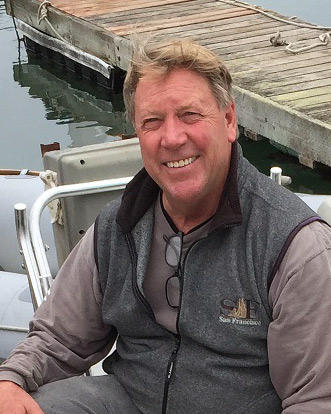 ICYMI … FIVE QUESTIONS: John McManus, Golden State Salmon Association
ICYMI … FIVE QUESTIONS: John McManus, Golden State Salmon Association
Five Questions is a new (hopefully) weekly series that will pose five questions to folks working on California water issues. The series kicks off with John McManus, president of the Golden State Salmon Association, which bills itself as California’s leading voice for salmon protection and restoration, particularly in the Bay-Delta ecosystem. GSSA’s board represents the entire California salmon community, including commercial and recreational fishermen, charter boat skippers, inland river guides, restaurants, fishing manufacturers and retailers, tribal members and more. I asked Mr. McManus five questions about salmon management in California. Click here to read this article.
 In memoriam of Jonas Minton
In memoriam of Jonas Minton
“Jonas Minton, who served Californians for decades as a member of the DWR team and Deputy Director, passed away this week at the age of 73. Jonas had a passion for protecting the environment and water during his impressive 33-year career with DWR. Jonas was manager of DWR’s Office of Water Supply Division from 1978 to 1994. During the 1990s, he worked for the El Dorado County Water Agency, the U.S. Bureau of Reclamation, and the Executive Director of the Water Forum before being appointed Deputy Director at DWR by Governor Gray Davis in 2000. Among his many projects and accomplishments during his time at DWR, Jonas worked on the purchase of Staten Island, flood corridor regulations, the Yuba Flood Control Program, water transfers, 50 different grant programs, water use efficiency, and so much more. … ” Read more from DWR News here: In memoriam of Jonas Minton
Appointments from the Office of the Governor
Letty Belin, 70, of Oakland, has been appointed to the San Francisco Bay Regional Water Quality Control Board.
Belin has been Principal at Alletta Belin Consulting LLC since 2017. She was a Landreth Visiting Fellow for Stanford Water in the West in 2018, Senior Counselor to the Deputy Secretary at the U.S. Department of the Interior from 2009 to 2017 and Founder and Partner of Belin & Sugarman Law Office from 2000 to 2009. Belin was Director of the Environment, Energy and Telecommunications Division at the New Mexico Attorney General’s Office from 1993 to 1999. She earned a Juris Doctor degree from Stanford Law School. This position requires Senate confirmation and the compensation is $250 per diem. Belin is a Democrat.
Brian Johnson, 53, of San Francisco, has been appointed to the Klamath River Renewal Corporation Board of Directors.
Johnson has been California Director of Trout Unlimited Inc. since 2011, where he was Director of the California Water Program from 2005 to 2011. He was an Associate at Shute, Mihaly & Weinberger LLP from 2000 to 2005 and Associate Director for Communications at the Council on Environmental Quality, Executive Office of the President from 1993 to 1997. Johnson was Manager of Energy Star Computers at the U.S. Environmental Protection Agency, Office of Air and Radiation from 1991 to 1993. He earned a Juris Doctor degree from Stanford Law School. This position does not require Senate confirmation and there is no compensation. Johnson is a Democrat.
Kristin Peer, 42, of Sacramento, has been appointed to the Klamath River Renewal Corporation Board of Directors.
Peer has been a Water Attorney at Bartkiewicz Kronick & Shanahan since 2022. She was Deputy Secretary and Special Counsel for Water Policy at the California Environmental Protection Agency from 2019 to 2022 and Assistant General Counsel there from 2015 to 2019. Peer was a Deputy Attorney General at the California Department of Justice, Office of the Attorney General from 2010 to 2015 and an Associate at Miller, Starr, Regalia from 2007 to 2010. She was a Credit Analyst at Union Bank from 2002 to 2004. Peer earned a Juris Doctor degree from the University of California, Los Angeles School of Law. This position does not require Senate confirmation and there is no compensation. Peer is a Democrat.
Lester Snow, 70, of Fair Oaks, has been reappointed to the Klamath River Renewal Corporation Board of Directors …
… where he has served since 2016. Snow has been an Independent Consultant since 2016. He was Executive Director of the Resources Legacy Fund’s Water Foundation from 2011 to 2016, Secretary of the California Natural Resources Agency from 2010 to 2011 and Director of the California Department of Water Resources from 2004 to 2010. Snow is a Member of the California Water Service Group Board of Directors. He earned a Master of Science degree in Water Resources Administration from the University of Arizona. This position does not require Senate confirmation and there is no compensation. Snow is a Democrat.
Podcasts …
REBUILD SOCAL PODCAST: California’s water crisis: Discussing the megadrought with Karla Nemeth
“We are not going to conserve our way out of this drought.” In this episode, host Jon Switalski spoke with the Director of the California Department of Water Resources, Karla Nemeth. We discuss how California found itself in the midst of one of the longest and worst droughts in the last 1200 years. Nemeth also speaks about water recycling, the role climate change has in the drought, and the new emergency water regulations put forth by the State Water Resources Control Board.
WEST COAST WATER JUSTICE PODCAST: Updating California water policy for climate change
Currently, California is on track to lose most if not all native fish species within this century if we don’t adapt to climate change. We talk with Clifford Lee; retired deputy attorney general with the California Department of Justice who served the state for 40 years. Clifford shares his expertise and recommendations for updating California’s water policy to mitigate the effects of climate change. He explains some of the policies that got us here and the nuts and bolts of the agencies that regulate and move water throughout the state.
REBUILD SOCAL PODCAST: California’s water crisis: Discussing water solutions with Deven Upadhyay of Metropolitan Water District
In the second part of our mini-series focused on California’s water crisis, we spoke with Deven Upadhyay, the Chief Operating Officer and Assistant General Manager at the Metropolitan Water District. Host Marci Stanage talks with Mr. Upadhyay about water reuse, the many benefits of recycled water, and conservation efforts.
WATER IS A MANY SPLENDOR’ED THING PODCAST: Groundwater’s Value
 Have you ever wondered where the water comes from in towns that have no significant rivers or lakes? You may not realize it but the water that you count on for everyday living in these areas comes from beneath your feet. Many times, at great depth. Water is a Many Splendor’ed Thing brings you another water relationship that has a personally significant impact to your life. Podcasts produced by Steven Baker, Bringing People Together to Solve Water Problems, email water@operationunite.co , 530-205-6388
Have you ever wondered where the water comes from in towns that have no significant rivers or lakes? You may not realize it but the water that you count on for everyday living in these areas comes from beneath your feet. Many times, at great depth. Water is a Many Splendor’ed Thing brings you another water relationship that has a personally significant impact to your life. Podcasts produced by Steven Baker, Bringing People Together to Solve Water Problems, email water@operationunite.co , 530-205-6388
ENGINEERING WITH NATURE PODCAST: Leveraging federal partnering to infuse nature into urban community resilience
We’re discussing the role of EWN and nature-based solutions (NBS) in addressing urban challenges to build community and regional resilience. Host Sarah Thorne is joined by new co-host, Burton Suedel, Research Biologist at the US Army Corps of Engineers (USACE); Abby Hall, Senior Advisor on Local and Regional Planning, with the Office of Community Revitalization, at the US Environmental Protection Agency (USEPA); and Jim McPherson, Federal Coordinating Officer for Region 1, with the Federal Emergency Management Agency (FEMA).
In regional water news this weekend …
NORTH COAST
CA water board readopts precedent-setting groundwater regs
“Family farmers and ranchers in Siskiyou County in far-northern California will continue to face unprecedented groundwater and surface water curtailments this summer and next if the drought continues. On June 21, the California State Water Resources Control Board readopted a drought emergency regulation for the Scott River and Shasta River watersheds that continues severe curtailments based on new minimum flow requirements in the Scott and Shasta rivers. Some amendments were made to the existing emergency regulation, which was put in place by the water board last September. According to the Scott Valley Agriculture Water Alliance (AgWA), a local grassroots communication group that formed in response to the emergency regulations, the adopted changes added some flexibility to the previous regulation. … ” Read more from the Western Livestock Journal here: CA water board readopts precedent-setting groundwater regs
New legislation could give Karuk Tribe uninterrupted access to sacred land
“Yesterday, U.S. lawmakers introduced new legislation to put sacred land back into the hands of the Karuk Tribe. Senators Alex Padilla and Dianne Feinstein introduced the Katimiîn and Ameekyáaraam Sacred Lands Act to transfer ownership of sacred lands in Humboldt and Siskiyou Counties from the U.S. Forest Service to the Interior Department. The department will then place those lands into trust for the federally-recognized Karuk Tribe. This means the tribe will receive full, uninterrupted access to 1,000 acres of federal land that the tribe has used for hundreds of years to hold ceremonies and teach new generations about traditional culture and customs. The ancestral land called Katimiîn is considered to be the center of the Karuk world and is the ending point for the tribe’s World Renewal Ceremonies. … ” Read more from KRCR here: New legislation could give Karuk Tribe uninterrupted access to sacred land
Fine proposed against cannabis cultivators for runoff that threatens Mad River water quality
“Three cannabis cultivators in Humboldt County are facing a $209,687 fine in connection with sediment discharged into tributaries of the Mad River that posed a risk to water quality and aquatic life, according to a formal complaint signed last week by staff of the North Coast Regional Water Quality Control Board. Szagora LLC, Toshko Toshkoff and Rudy Chacon (the “cultivators”) commercially cultivated cannabis on a 100–acre property along the Humboldt–Trinity County line between the towns of Dinsmore and Mad River. The complaint alleges the cultivators failed to obtain a permit to legally cultivate cannabis and did not respond to an enforcement order requiring them to maintain an access road on their property consistent with industry standards designed to protect water quality and beneficial uses. … ” Read more from the State Water Board here: Fine proposed against cannabis cultivators for runoff that threatens Mad River water quality
MOUNTAIN COUNTIES
15 years since the Angora Fire – What has changed?
“It has been 15 years since the Angora Fire swept through the North Upper Truckee and Angora Ridge neighborhoods of El Dorado County, taking with it 242 homes and 67 commercial structures as wind-driven flames burned through 3,100 acres. It was a sunny afternoon on June 24, 2007, when the first calls of fire came in at 2:15 p.m. Within a few hours, the devastation was already evident but it was over a week before the fire was completely contained. Anyone living on the South Shore at the time can tell you exactly what they were doing at the time of the fire. Some were fleeing their homes for the last time, others were watching from afar as the huge plume of smoke appeared over the landscape. … ” Read more from South Tahoe Now here: 15 years since the Angora Fire – What has changed?
SACRAMENTO VALLEY
Tehama County approves 29 cent property, well-study fee
“Nearly 100 people showed up at a public hearing to protest a proposed annual fee of 29 cents per acre for property owners in Tehama County during a county Flood Control and Water Conservation District meeting on Monday, June 20 in the county’s Board of Supervisors Chambers. The agency’s Board of Directors, consisting of the Tehama County Board of Supervisors, voted 4-1 to approve the fee, which was established to fund the creation, implementation, and administration of a county-wide well registration program. Director Candy Carlson voted against the proposal. “I believe this is a tax, not a fee, and a tax has to be voted on by the people,” said Carlson. The fee will apply to every acre in the county, including the municipalities of Corning, Red Bluff and Tehama, with the fee in those jurisdictions being paid by the respective city. … ” Read more from the Appeal Democrat here: Tehama County approves 29 cent property, well-study fee
SEE ALSO: Letter: County imposes additional fee on water users, from the Tehama Daily News
BAY AREA
These San Mateo County beaches are among the dirtiest in California
“California may be known for its beautiful, clean beaches, but the Bay Area is home to three of the dirtiest and most polluted in the state — all of them along San Francisco Bay in San Mateo County. Santa Barbara-based nonprofit Heal the Bay this week released its 32nd beach report card which noted both the state’s cleanest, most exceptional beaches in terms of environmental quality and also its dirtiest and most polluted. Three beaches in San Mateo County — two of them in Foster City — were ranked second, third, and eighth most polluted in the state in large part because they are enclosed and don’t connect to the San Francisco Bay. … ” Read more from the San Jose Mercury News here: These San Mateo County beaches are among the dirtiest in California
SAN JOAQUIN VALLEY
Madera County GSA – A split decision on a big fee
“The Madera County Groundwater Sustainability Agency (GSA) represents the groundwater-only portion of two critically overdrafted subbasins in the Central Valley: the Madera Subbasin and the Chowchilla Subbasin, both of which have a significant number of dairies. The GSA has been working for a number of years on complying with the Sustainable Groundwater Management Act to put together a Groundwater Sustainability Plan that would essentially eliminate groundwater overdraft between now and the year 2040. Part of that plan included an annual per irrigated acre fee to fund projects and programs that would assist the area in increasing surface water supplies and paying for land fallowing programs. … ” Read more from the Milk Producers Council here: Madera County GSA – A split decision on a big fee
Kern County reverses course on ag well permitting
“In a complete turnaround from its stance earlier this week, Kern County late Thursday dropped its requirement that groundwater agencies make certain findings about proposed new agricultural wells before it would consider issuing permits for those wells. The situation had reached a boiling point in the local ag community as the Kern County Environmental Health Department had not issued a single permit for a new or replacement ag well since April 6. The department has 16 pending ag well applications. Farmers were left in the lurch even as the drought has crippled surface water supplies and dropped water tables to the point that some existing wells ceased to function. … ” Read more from SJV Water here: Kern County reverses course on ag well permitting
EASTERN SIERRA
NASA Jet Propulsion Laboratory working at Mono Lake
“NASA has been coming to Mono Lake for many years, and they are back on our shores once again. The Jet Propulsion Laboratory (JPL) team arrived last Sunday and set up a mobile laboratory in the Mono Basin Scenic Area Visitor Center parking lot for the week. The tiny space contains several labs, including a microbial analysis lab in a single portable box, and the hope is that this mobile lab will be able to be transported and utilized anywhere. NASA JPL is here at Mono Lake as part of the Ocean Water Life Surveyor (OWLS) project. This project is working to prepare and fine tune their methods for a trip to Saturn’s and Jupiter’s moons, Enceladus and Europa, respectively. … ” Read more from the Mono Lake Committee here: NASA Jet Propulsion Laboratory working at Mono Lake
Inyo Supervisors take a look at water use at Fish Springs Fish Hatchery
“Tuesday’s Inyo County Board of Supervisors’ meeting reconvened from the administration building in Independence to Fish Springs Fish Hatchery to get a first-hand look at the impact of pumping on what was once a source of native fish for the Big Pine Paiute Tribe. The Supervisors, staff, tribal members and interested locals headed to the hatchery but could not enter the premises due to the presence of lactococcus garvieae. The bacterial infection first appeared in Eastern Sierra hatcheries in 2020, then made a comeback this summer. Infected fish are being euthanized; an inoculation has been developed to combat the disease. … ” Read more from the Sierra Wave here: Inyo Supervisors take a look at water use at Fish Springs Fish Hatchery
SOUTHERN CALIFORNIA
Rosamond water plan for year is approved
“The Rosamond Community Services District Board of Directors approved its 2020 Urban Water Management Plan, on Wednesday, following a public hearing. The plan is a blueprint used to show projected water demand and supplies up to 25 years in the future, including scenarios for normal and drought years. The state Department of Water Resources requires water agencies to update and submit the plans every five years. … ” Read more from the AV Press here: Rosamond water plan for year is approved
Eastern Municipal Water District dedicates third desalination facility
“Eastern Municipal Water District (EMWD) today celebrated the opening of its new groundwater desalination facility, which will provide additional local water supply reliability to its service area for future generations. The Perris II Desalination Facility is EMWD’s third groundwater desalter and will provide enough water for more than 15,000 households each year through its reverse osmosis treatment process. The facility is located in Menifee, adjacent to the existing Menifee I and Perris I desalters. “This is a historic day for EMWD and for the residents we serve,” EMWD Board President Phil Paule said. “As we continue to face water supply challenges throughout California, this facility will further ensure that our area is prepared to meet the needs of our customers through investments in local water supply sources.” … ” Read more from Eastern Municipal Water District here: Eastern Municipal Water District dedicates third desalination facility
Removing an old desalination facility could close parts of Junipero Beach for months
“A 15-year-old pilot project that the Long Beach Water Department initiated to test a new desalination filtration process could be removed later this year and require parts of Junipero Beach to be closed to the public. The Under Ocean Floor Seawater Intake & Discharge Demonstration System was intended to study a new and less intrusive way of stripping the salt out of seawater to make it safe for consumption. An initial permit allowed the department to study the technology for five years and the department extended the permit for an additional 10 years but now the project is expected to come to an end in May 2023. Removing the system is expected to cost about $5 million with work expected to start in September. … ” Read more from the Long Beach Post here: Removing an old desalination facility could close parts of Junipero Beach for months
IMPERIAL/COACHELLA VALLEYS
Commentary: Importing water to save the Salton Sea is long overdue. What are we waiting for?
Feliz Nunez, resident of Bermuda Dunes, writes, “Owens Lake in Northern California became a disastrous dust bowl when the city of Los Angeles built a 200-mile aqueduct and completely drained the lake. Officials at the Salton Sea are following the Owens Lake path. Their ongoing practice of digging furrows and shallow ponds to control dust as more and more lakebed is exposed is questionable. Politicians and state officials who favor using the “incremental approach” with patronizing dry measures and shallow-water fixtures have succeeded in the serial killing of fish and other wildlife, and we are heading toward ever-more inhospitable conditions for humans. Importing ocean water would immediately address respiratory ailments, reverse the effects of drought and curb pollution. But the high cost is the main argument against water importation. In my view that expense is worth it. Yes, it will cost money to be a community that respects and takes care of our air, water, and soil. … ” Read more from the Desert Sun here: Commentary: Importing water to save the Salton Sea is long overdue. What are we waiting for?
Letters to the editor: The drought-parched West wants to take Mississippi River water? Fat chance! Or is it?
“Leave it to the Westerners to come up with solutions to their problems by causing problems for others. Las Vegas resident Bill Nichols’ June 22 suggestion of diverting Mississippi River water to the Southwest to help solve the Southwest’s drought problem is nothing more than a plan to steal, under federal-government oversight at taxpayers’ expense, water that belongs to the Midwest. … ” Read more from the Desert Sun here: Letters to the editor: The drought-parched West wants to take Mississippi River water? Fat chance! Or is it?
SAN DIEGO
Summer of water conservation in California
“State, regional, and local leaders are joining forces to urge water conservation across San Diego County and statewide at the start of summer. With drought conditions worsening in every corner of the Southwest, California Gov. Gavin Newsom has called on residents and businesses to take additional conservation measures to help ease the effects of extreme drought during the hot summer months. On June 23, the San Diego County Water Authority’s Board of Directors unanimously adopted a resolution reaffirming the agency’s commitment to conservation after joining California Natural Resources Secretary Wade Crowfoot, San Diego Mayor Todd Gloria and regional leaders by committing to additional water-saving measures to combat what scientists call the worst drought in 1,200 years. … ” Read more from the Water News Network here: Summer of Water Conservation in California
Along the Colorado River …
Saudi water deal threatening water supply in Phoenix
 “Arizona is leasing farmland to a Saudi water company, straining aquifers, and threatening future water supply in Phoenix. Fondomonte, a Saudi company, exports the alfalfa to feed its cows in the Middle East. The country has practically exhausted its own underground aquifers there. In Arizona, Fondomonte can pump as much water as it wants at no cost. Groundwater is unregulated in most rural areas of the state. Fondomonte pays only $25 per acre annually. The State Land Department says the market rate is $50 dollars per acre and it provides a 50% discount because it doesn’t pay for improvements. But the $25 per acre price is about one-sixth of the market price for unimproved farmland with flood irrigation today, according to Charlie Havranek, a Realtor at Southwest Land Associates. … ” Read more from Arizona PBS here: Saudi water deal threatening water supply in Phoenix
“Arizona is leasing farmland to a Saudi water company, straining aquifers, and threatening future water supply in Phoenix. Fondomonte, a Saudi company, exports the alfalfa to feed its cows in the Middle East. The country has practically exhausted its own underground aquifers there. In Arizona, Fondomonte can pump as much water as it wants at no cost. Groundwater is unregulated in most rural areas of the state. Fondomonte pays only $25 per acre annually. The State Land Department says the market rate is $50 dollars per acre and it provides a 50% discount because it doesn’t pay for improvements. But the $25 per acre price is about one-sixth of the market price for unimproved farmland with flood irrigation today, according to Charlie Havranek, a Realtor at Southwest Land Associates. … ” Read more from Arizona PBS here: Saudi water deal threatening water supply in Phoenix
Nevada conserves water, but big cuts to the river still may come
“Federal officials’ call for massive cuts along the Colorado River has water managers in the American West scrambling to find common ground before the federal government comes down with its own proverbial hammer. It’s a blow Southern Nevada is well positioned to absorb, thanks to a two-decade head start on conservation and significant investments in infrastructure to ensure water continues to flow in the Las Vegas Valley even in the worst of conditions. “We’re far and away the best positioned,” said John Entsminger, general manager of the Southern Nevada Water Authority. … ” Read more from the Las Vegas Review-Journal here: Nevada conserves water, but big cuts to the river still may come
Commentary: Our self-imposed water crisis signals a need for change
Michael Schaus, a communications and branding consultant based in Las Vegas, writes, “Given our water crisis in the West, it’s difficult to imagine a time when the Colorado River overran its banks on a regular basis. When the river flooded in 1905, it resulted in the creation of California’s largest lake — the Salton Sea. And during the Great Depression, to limit floods and encourage population and economic growth in the American Southwest, the federal government began construction on what was, at the time, the largest dam ever built — and eventually named after President Hoover. … Clearly things have changed dramatically since the early 20th Century. ... ” Read more from the Nevada Independent here: Commentary: Our self-imposed water crisis signals a need for change
Southwest showers and storms to keep fire risk at bay
“Recently, many in the Southwest have seen showers and thunderstorms slide through the area. Forecasters say that more of the same is in the forecast. While the rain will help dent the ongoing drought and keep wildfire concerns at bay, too much rain at once can lead to the opposite problem, with flash flooding a possibility. For most in the Desert Southwest, the weather conditions in May and June could not be more different. In Albuquerque, New Mexico, no measurable rainfall fell during May. But in June, the North American monsoon allowed tropical moisture to stream northward and bring rounds of rain. A total of 1.39 inches of rain, over 200 percent of the normal, has fallen through June 24. … ” Read more from AccuWeather here: Southwest showers and storms to keep fire risk at bay
In national water news this weekend …
Application Guide for the 2022 Sea Level Rise Technical Report Now Available
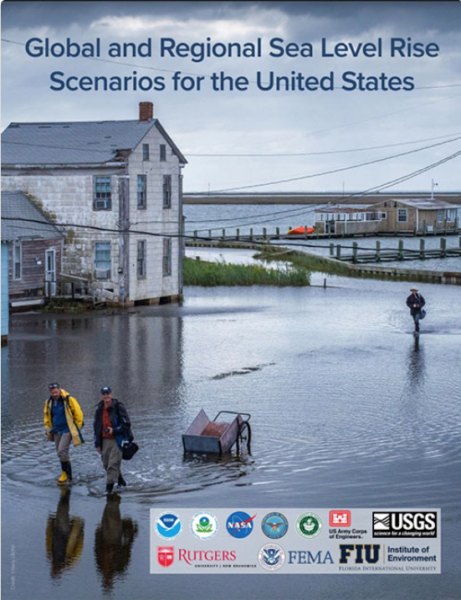 “Community planners and decision makers now have an application guide to help them plan for the significant sea level rise the United States is expected to see in the next 30 years. The guide is a response to the Interagency Sea Level Rise report, which projected about a foot of higher waters, on average, along U.S. coastlines by 2050. That is as much sea level rise in 30 years as the country witnessed in the previous century. For each community, and for each project, there are many factors to consider. The Application Guide for the 2022 Sea Level Rise Technical Report is a first-of-its-kind effort to help individuals and organizations wade through various local considerations to arrive at the best approach for their community. In this way, they can advance coastal resilience on their own terms and adopt planning and adaptation initiatives that make the most sense for their situation. … ” Read more from NOAA here: Application Guide for the 2022 Sea Level Rise Technical Report Now Available
“Community planners and decision makers now have an application guide to help them plan for the significant sea level rise the United States is expected to see in the next 30 years. The guide is a response to the Interagency Sea Level Rise report, which projected about a foot of higher waters, on average, along U.S. coastlines by 2050. That is as much sea level rise in 30 years as the country witnessed in the previous century. For each community, and for each project, there are many factors to consider. The Application Guide for the 2022 Sea Level Rise Technical Report is a first-of-its-kind effort to help individuals and organizations wade through various local considerations to arrive at the best approach for their community. In this way, they can advance coastal resilience on their own terms and adopt planning and adaptation initiatives that make the most sense for their situation. … ” Read more from NOAA here: Application Guide for the 2022 Sea Level Rise Technical Report Now Available
Outlook for flood insurance policy reforms remains cloudy
“Created by Congress in 1968, the National Flood Insurance Program insures approximately 4.9 million policyholders in nearly 22,600 participating communities. Largely solvent for most of its history, the NFIP today is about $20.5 billion in debt, the result of such large-scale disasters as Hurricane Katrina in 2005, Hurricane Sandy in 2012, and Hurricane Harvey in 2017. Congress last reauthorized the NFIP on a long-term basis in 2012. Since then, the program has been temporarily extended nearly 20 times, reflecting an inability on the part of Congress to fashion bipartisan approaches to reforming the program, which is overseen by the Federal Emergency Management Agency. With the NFIP scheduled to expire at the end of September, a House subcommittee recently held a hearing to examine issues related to reauthorizing and reforming the NFIP, including the questions of what to do about its debt and how to make the program more affordable to people with low or moderate incomes. … ” Read more from Civil Engineering Source here: Outlook for flood insurance policy reforms remains cloudy
“We hear a lot about how climate change will change the land, sea and ice. But how will it affect clouds? “Low clouds could dry up and shrink like the ice sheets,” said Michael Pritchard, an Earth system scientist at the University of California, Irvine. “Or they could thicken and become more reflective.” These two scenarios would result in very different future climates. That, Pritchard says, is part of the problem. “If you ask two different climate models what the future will be like when we add a lot more CO2, you get two very different answers. And the reason for that is the way clouds are included in climate models.” Clouds and aerosols — bits of soot and dust that nucleate cloud droplets — are an important part of the climate equation. But that these phenomena occur on a length- and time-scale that today’s models can’t come close to reproducing. They are therefore included in models through a variety of approximations. … ” Read more from the National Science Foundation here:

